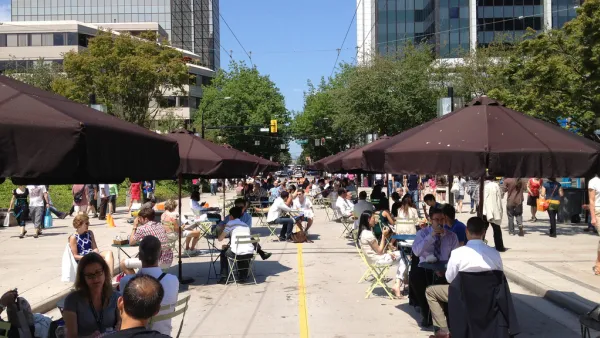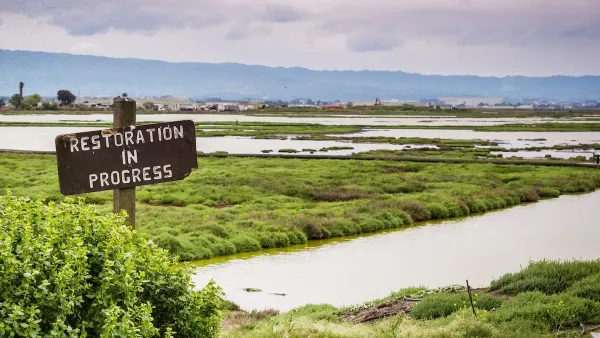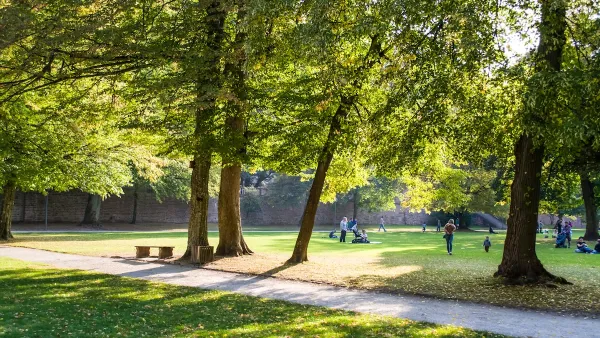If it emulated and adapted the scope of its predecessor, the Green New Deal could transform the country in fundamental ways, with builders, planners, and architects playing central roles.

Two futures may be in store for the country, Kelsey Campbell-Dollaghan writes. "Escalating storms, floods, droughts, mass migration, food scarcity, and economic instability could dramatically alter the physical landscape and economy." Or, more optimistically, "A national effort to retrofit millions of buildings and rethink the way communities are designed could help Americans withstand the ravages of climate change and make the country more equitable."
Discussing issues of bureaucratic reform, land use, architecture, labor, and equity, Campbell-Dollaghan outlines what it might take to implement the Green New Deal. That includes environmental retrofits for "tens of millions of houses and apartment buildings," an endeavor that would employ an immense workforce and necessitate a lot more federal oversight of local affairs.
The Green New Deal also bakes in an explicit focus on equity, with consequences for housing affordability and the workforce. "A renovation program on this scale could have many unintended effects" on vulnerable populations that policymakers would need to address.
Campbell-Dollaghan also discusses how the Green New Deal could truly engage architects and designers in the oft-talked about project of sustainable, equitable development. "The resolution poses an opportunity for architects and designers to reclaim their relevance to society, not as service providers for wealthy clients but as vocal leaders on major issues in the built world, like social justice and climate change."
FULL STORY: The Green New Deal could change the way America builds—here’s how

National Parks Layoffs Will Cause Communities to Lose Billions
Thousands of essential park workers were laid off this week, just before the busy spring break season.

Retro-silient?: America’s First “Eco-burb,” The Woodlands Turns 50
A master-planned community north of Houston offers lessons on green infrastructure and resilient design, but falls short of its founder’s lofty affordability and walkability goals.

Delivering for America Plan Will Downgrade Mail Service in at Least 49.5 Percent of Zip Codes
Republican and Democrat lawmakers criticize the plan for its disproportionate negative impact on rural communities.

Test News Post 1
This is a summary

Test News Headline 46
Test for the image on the front page.

Balancing Bombs and Butterflies: How the National Guard Protects a Rare Species
The National Guard at Fort Indiantown Gap uses GIS technology and land management strategies to balance military training with conservation efforts, ensuring the survival of the rare eastern regal fritillary butterfly.
Urban Design for Planners 1: Software Tools
This six-course series explores essential urban design concepts using open source software and equips planners with the tools they need to participate fully in the urban design process.
Planning for Universal Design
Learn the tools for implementing Universal Design in planning regulations.
EMC Planning Group, Inc.
Planetizen
Planetizen
Mpact (formerly Rail~Volution)
Great Falls Development Authority, Inc.
HUDs Office of Policy Development and Research
NYU Wagner Graduate School of Public Service





























